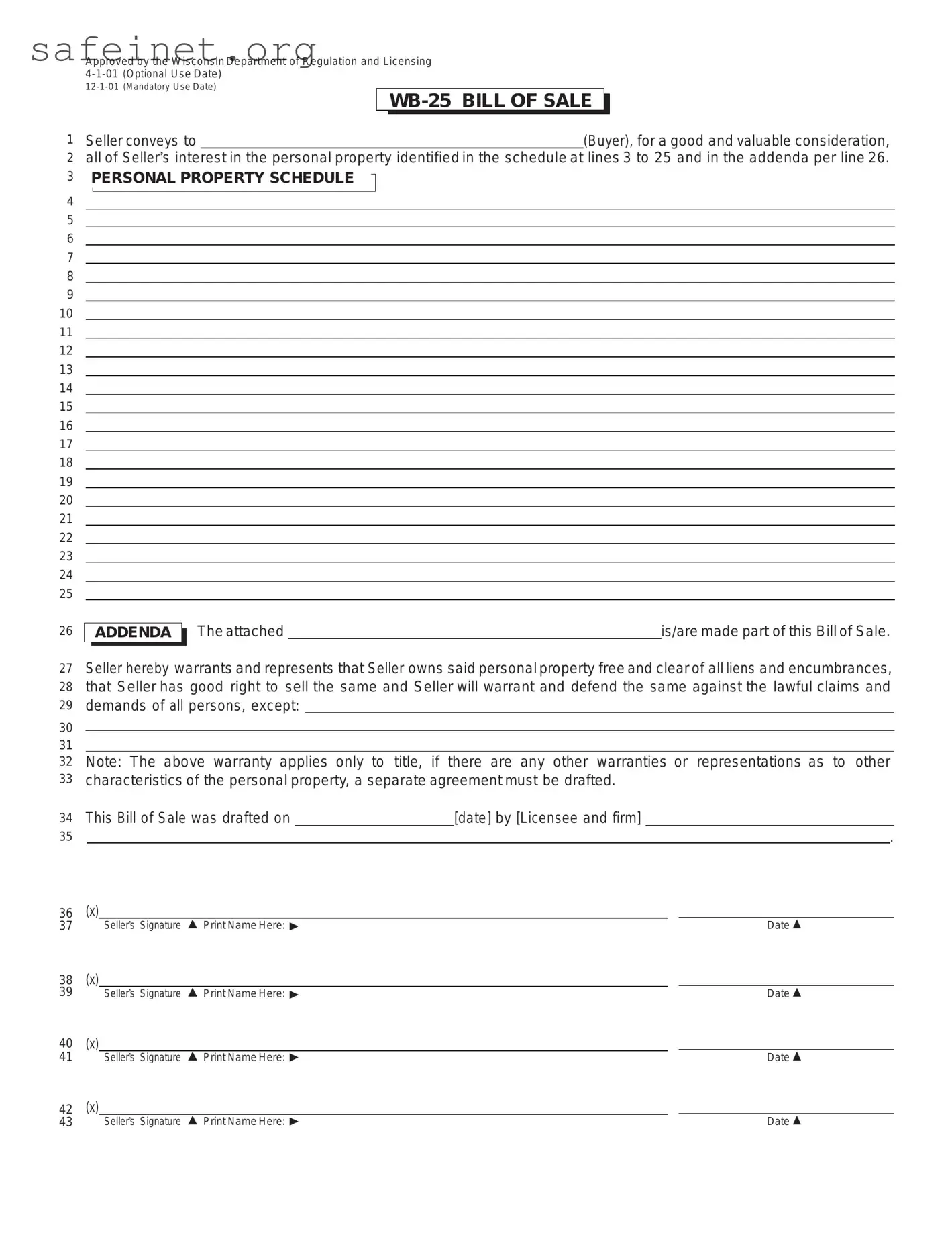What is the BOS WB-25 form?
The BOS WB-25 form is a document used in specific regulatory or compliance contexts. Its main purpose is to collect and verify information for administrative processes. Typically, it may involve personal details, financial information, or data relevant to a particular industry or sector. Understanding its use can help individuals comply with necessary requirements and streamline procedures.
Who needs to fill out the BOS WB-25 form?
Individuals or organizations required to submit the BOS WB-25 form typically include those involved in compliance with specific regulations. This may range from small business owners to larger enterprises, depending on the nature of the regulation. It's essential to check the specific requirements if you fall within the designated criteria outlined by the regulatory authority.
Where can I obtain the BOS WB-25 form?
You can usually obtain the BOS WB-25 form from the relevant regulatory agency's website or office. Contacting the agency directly may also provide access to the latest version of the form. Make sure to retrieve the correct form, as outdated versions might not be accepted.
What information do I need to provide on the BOS WB-25 form?
When filling out the BOS WB-25 form, you will need to provide various pieces of information. This may include your name, contact details, and possibly information related to your business or project. Be prepared to gather any supporting documentation that may be required for verification purposes.
Is there a deadline for submitting the BOS WB-25 form?
Deadlines for submitting the BOS WB-25 form can vary based on the specific context in which it is required. Generally, regulatory agencies will provide a timeline within which the form must be completed and submitted. It's important to pay close attention to these deadlines to ensure compliance and avoid potential penalties.
What happens if I submit the BOS WB-25 form late?
Submitting the BOS WB-25 form late may result in various consequences. These could range from fines and penalties to delays in processing your application or request. In some cases, your submission may not be accepted at all, requiring you to start the process over again. To avoid any issues, aim to submit the form on time.
Can I make corrections to the BOS WB-25 form after submission?
If you need to make corrections to the BOS WB-25 form after submitting it, the ability to do so depends on the regulations established by the relevant authority. Many agencies have procedures in place to address corrections, which might involve submitting an amendment or additional documentation. Always check with the agency for their specific policies regarding corrections.

